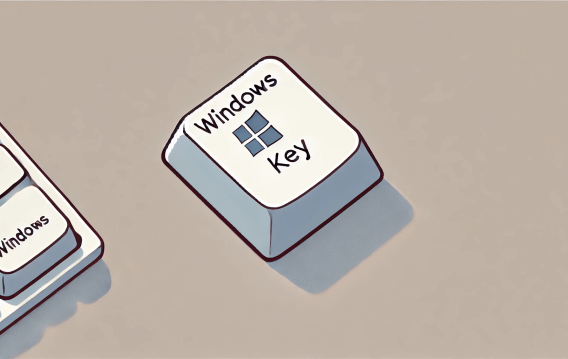The Windows key often walks a fine line between efficiency and disruption. On the one hand, it optimizes how we maneuver the operating system, particularly when combined with other keys.
On the other hand, it can cause frustrating interruptions, prompting some users to ask, “ Is there a way to disable the Windows key? ”
The interruptions can lead to significant problems in different scenarios, especially for gamers, programmers, and other professionals who must focus on tasks. Take gamers who rely on the WASD keys, for example.
It’s easy to forget the palm’s proximity to the Windows key in the heat of gameplay. Accidentally pressing the key alongside any of those game buttons triggers a “hotkey” that yanks the player out of their game.
Keyboard combinations (hotkeys) that could disrupt a game session include:
Windows key + W, which triggers the Widgets app in Windows 11 and Microsoft Whiteboard in Windows 10.Windows key + A, which launches the Action CenterWindows key + S, which opens the search boxWindows key + D, which shows and closes the desktop.
Other Causes of Windows Key Interruptions
Apart from the WASD keys, other hotkeys cause interruptions, whether you’re in a game, typing code, or running some other critical task. For example, if your computer is connected to an external display, the Windows key + P keyboard shortcut can trigger the Project menu, causing you to change your multi-display configuration.
The “Windows key + L” shortcut can lock your computer altogether. Some dedicated gaming keyboards allow you to lock the Windows key with just a tap. If you do not have such a keyboard or quick option, don’t panic.
This article will show you how to disable the Windows key in Windows 10 and Windows 11.
How to Disable the Windows Key On Your Keyboard
In typical Windows fashion, there are different ways to turn off the Windows key . You can use tools like PowerToys and native Windows applications to turn off the button. Let’s go through the different processes one after the other.
Method 1: How to disable the Windows key using Microsoft PowerToys
PowerToys is a relic of the early Windows years. The Windows 95 Shell Team developed the first version, and many other editions were born later. But it suddenly disappeared after some years.
Thankfully, Microsoft brought back the suite of utilities in 2019 as an open-source project, tailoring it to the needs of today’s power users. It’s easier to use PowerToys to configure a toggle for the Windows key if you don’t have a dedicated block key on your keyboard.
The program’s Keyboard Manager allows you to remap keys how you see fit. Once you apply a setting (like turning off the Windows key), it takes effect without requiring a reboot.
Exiting the application deactivates all your configurations, and launching it reactivates them. Follow these steps to use the tool:
- Launch the Microsoft Store, search for
PowerToys, and install the program. You can also download and install it through its GitHub page.
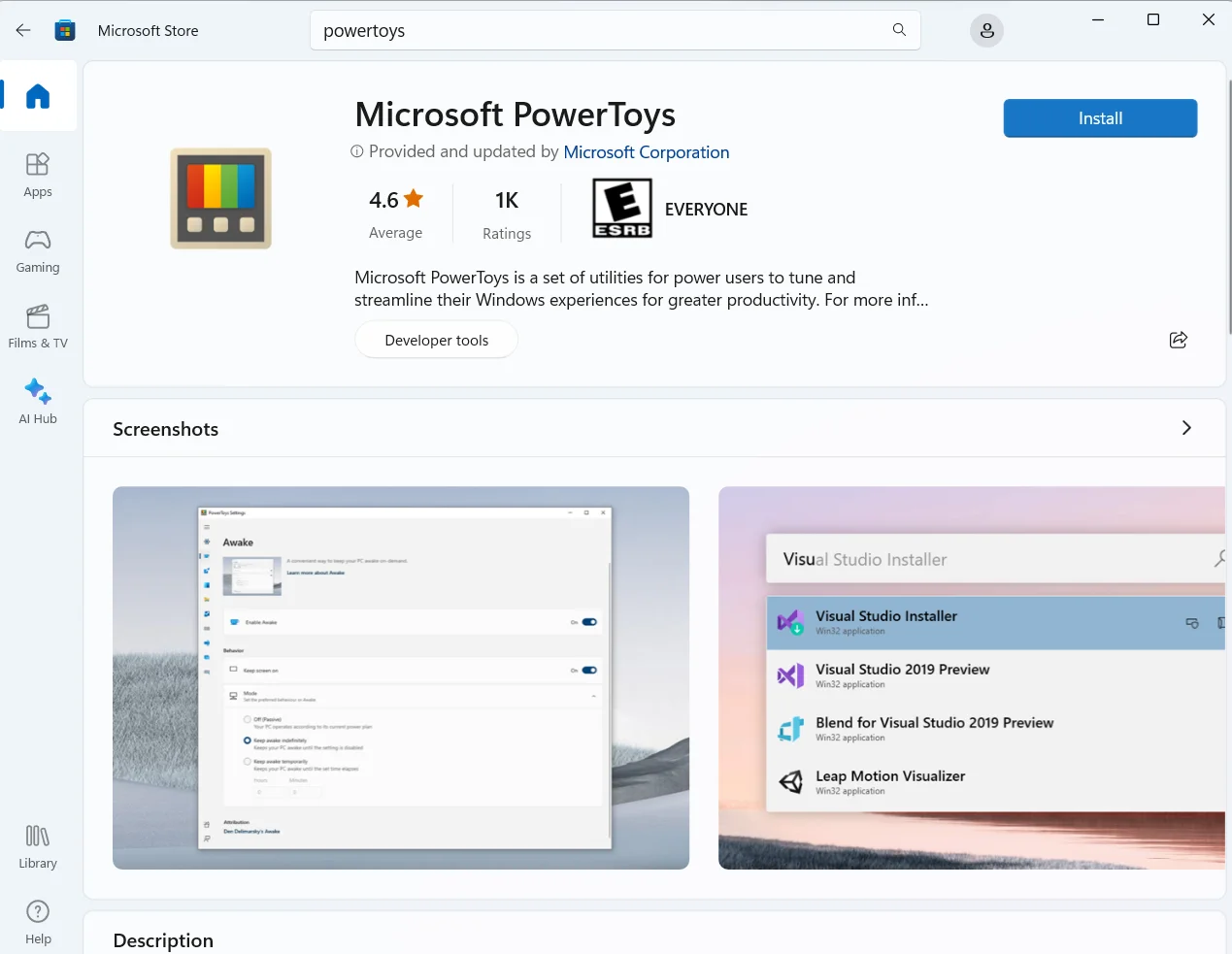
- Launch the utility after it opens.
- Go to the left navigation pane and select the Keyboard Manager tab.
- Navigate to the right side of the screen and select the Open Settings option.
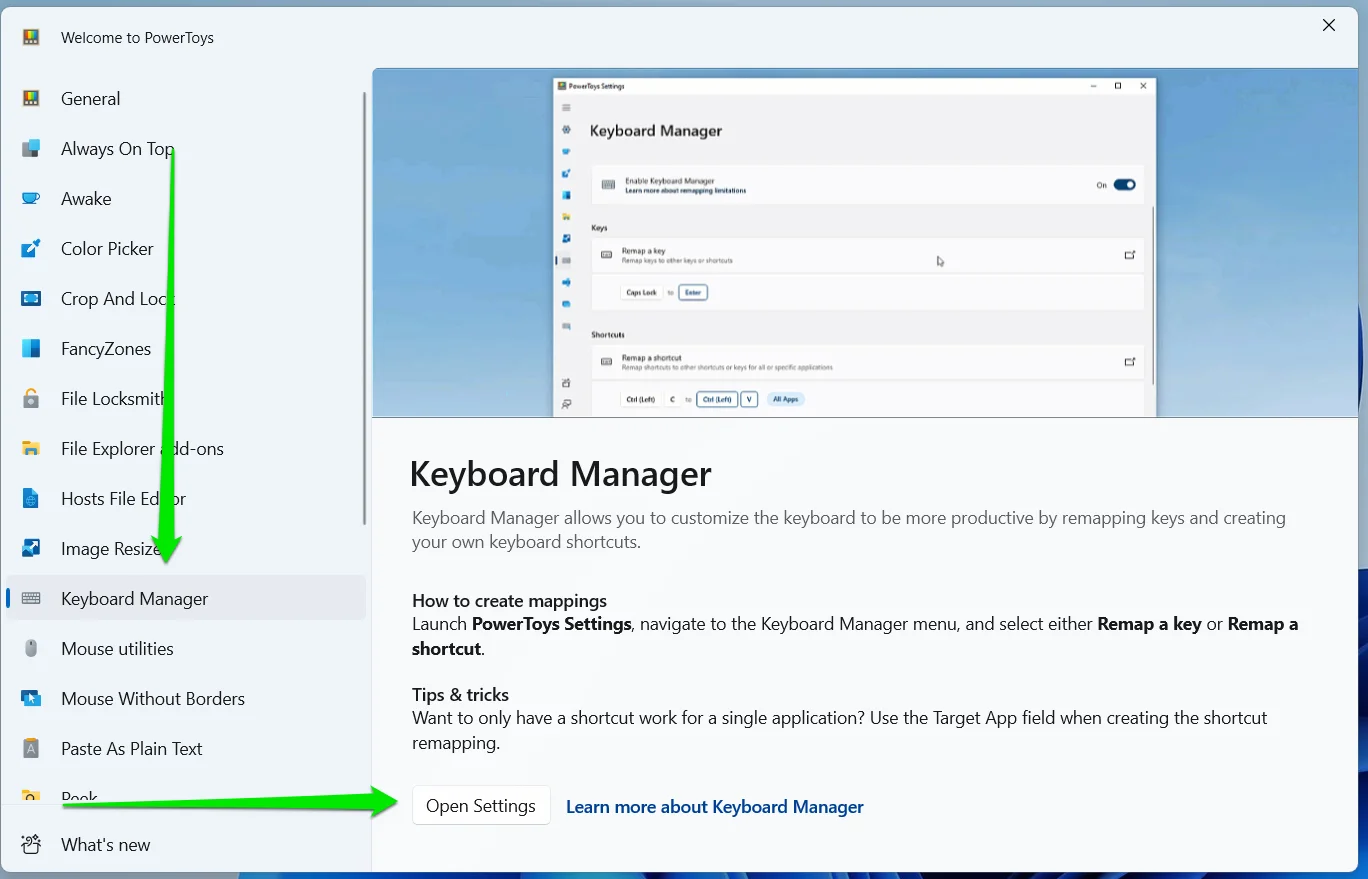
- Turn on the switch beside Enable Keyboard Manager and select the Remap a Key option.
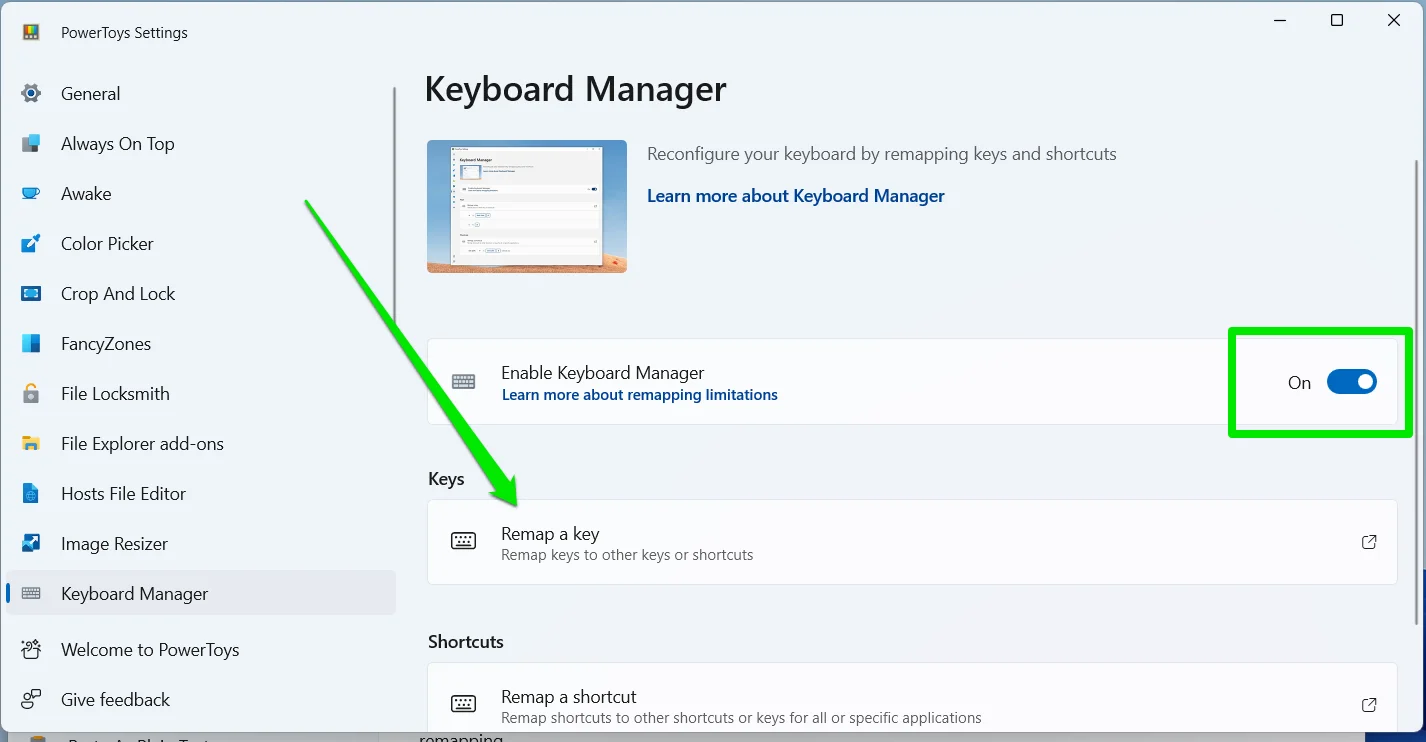
- Once the Remap Keys window opens, click the plus icon.
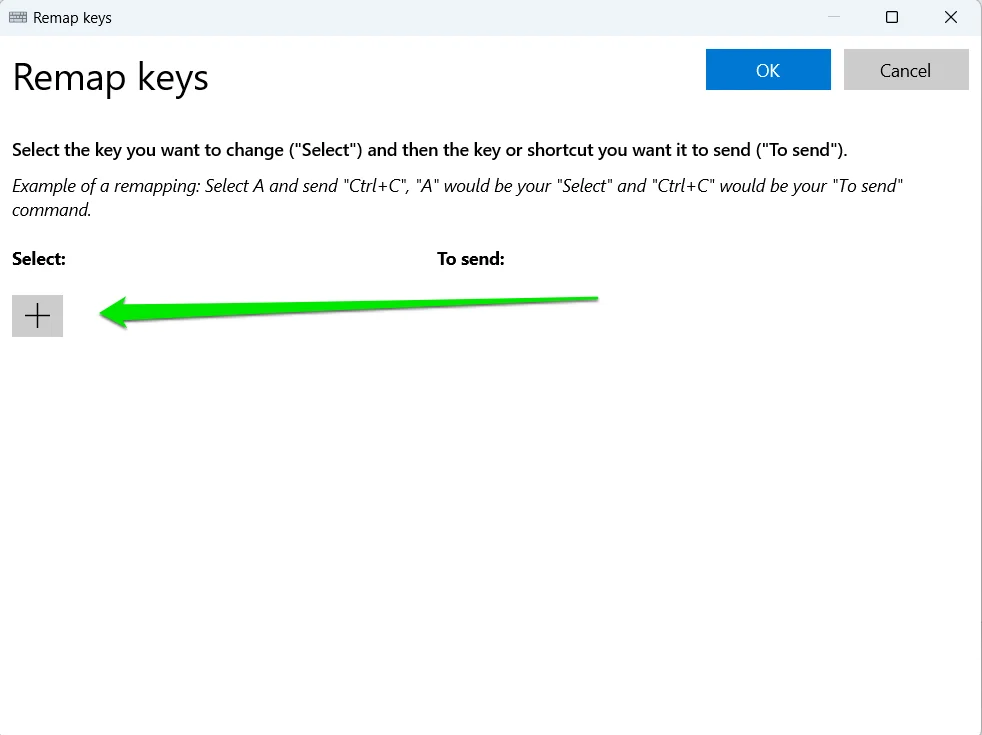
- Open the drop-down menu under Select and choose Win.
- Open the drop-down menu under To Send, scroll to the top, and choose Disable.
- Click the OK button at the top of the window.
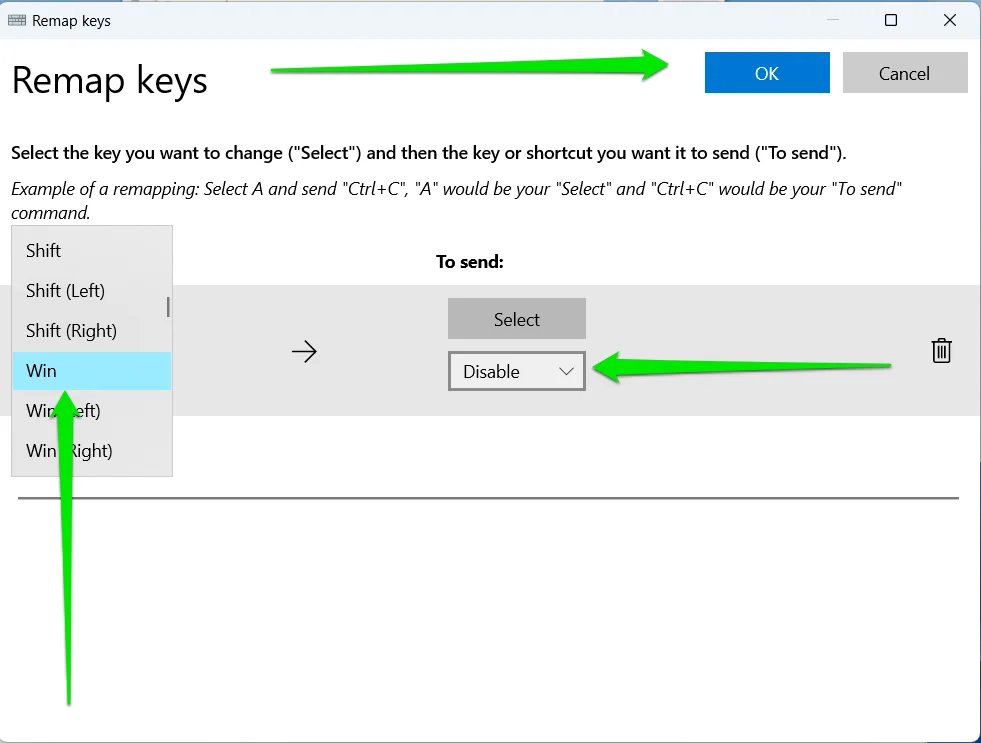
- Click Continue Anyway in the warning dialog, and the key will be disabled. If your keyboard has two Windows keys, the tool will deactivate both, and you don’t have to restart your computer to activate the change.
- To reactivate the key, go to the System Tray, right-click the PowerToys icon, and select Exit.
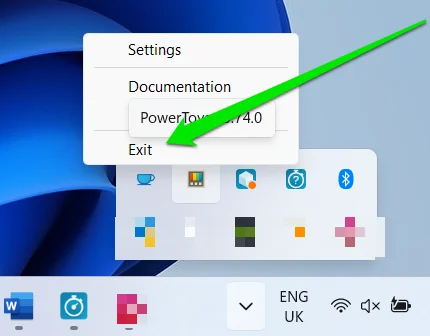
- Whenever you relaunch the tool, it will automatically disable your Windows key.
- You can return to the Remap Keys window and delete your settings whenever you choose to.
If you’re uncomfortable with adding a new program with such advanced capabilities, you can use native Windows applications such as the Registry Editor or the Local Group Policy Editor.
📌 Also read: [FIXED] How to Fix Windows Key Not Working on Windows 10 and 11?
Method 2: How to turn off the Windows key using the registry editor
You should note that making incorrect changes to the Windows registry can cause operating system instability and failure. You should back up the registry and create a restore point to be on the safe side. This method shows you how to create and modify a Binary Value to turn off the Windows key. So, it’s critical that you follow the guidelines carefully.
If you’re not comfortable editing the registry, you can get someone to help.
How to back up your registry
Firstly, follow these steps to back up the registry before applying the edit:
- Go to the Start menu, type
Regedit, and click Registry Editor in the results. - Since you need administrator privileges to run the program, the Windows User Account Control dialog will request permission. Click the Yes button.
- After the Registry Editor window opens, go to the top-left corner, click File, and select Export.
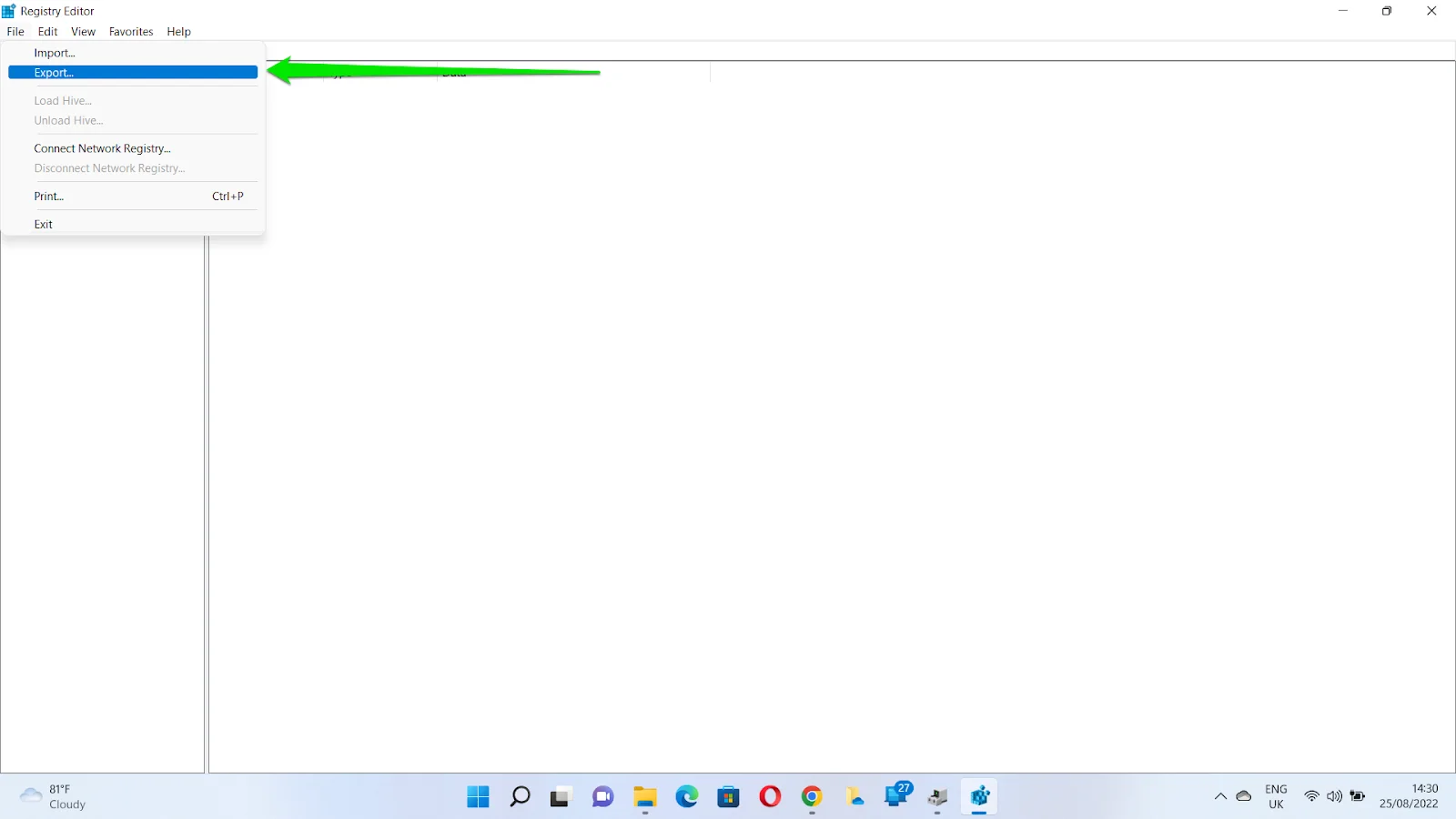
Now, you’ll be exporting the entire registry. So, go to the Export Range section in the Export Registry File window and select All.
Choose the location for the file, enter its name, and click the Save button.
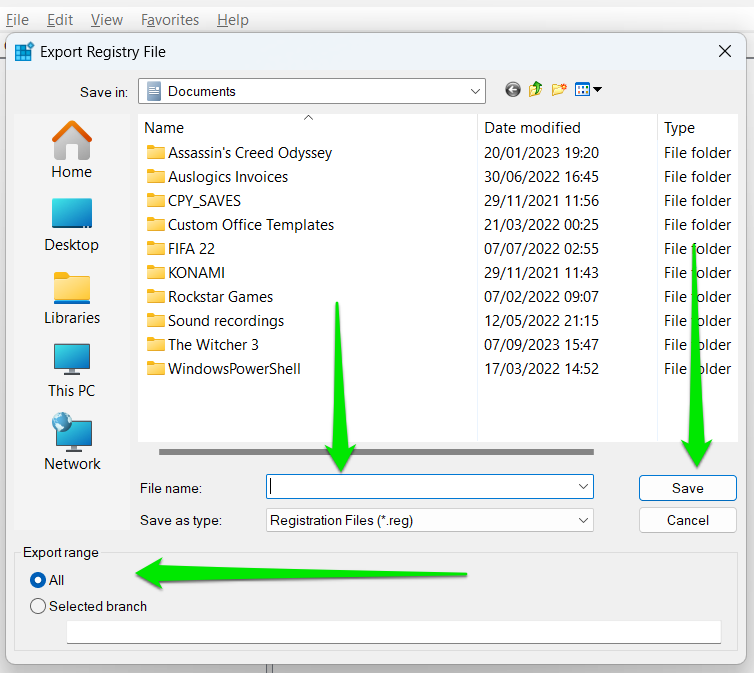
You can now easily recover the registry by opening the Registry Editor, clicking File > Import, heading to the location where you saved the backup, and double-clicking it.
📌 Also read: Ultimate Guide: How to Fix Broken Registry Items in Windows 10/11
Using Windows Registry to disable Windows key
We’ll be showing you two Registry Editor methods to disable the Windows key. The first method will disable the hotkeys but will allow the Start menu to show up when you tap the Windows key.
You’ll hear the Critical Stop sound indicating that Windows cannot complete the action whenever you tap the Windows key alongside another keyboard button. Follow these steps:
- Once you open the Registry Editor, go to the left navigation pane and drill down to the following key:
HKEY_CURRENT_USER\Software\Microsoft\Windows\CurrentVersion\Policies\Explorer
You can also copy the path and paste it into the Registry Editor’s address bar.
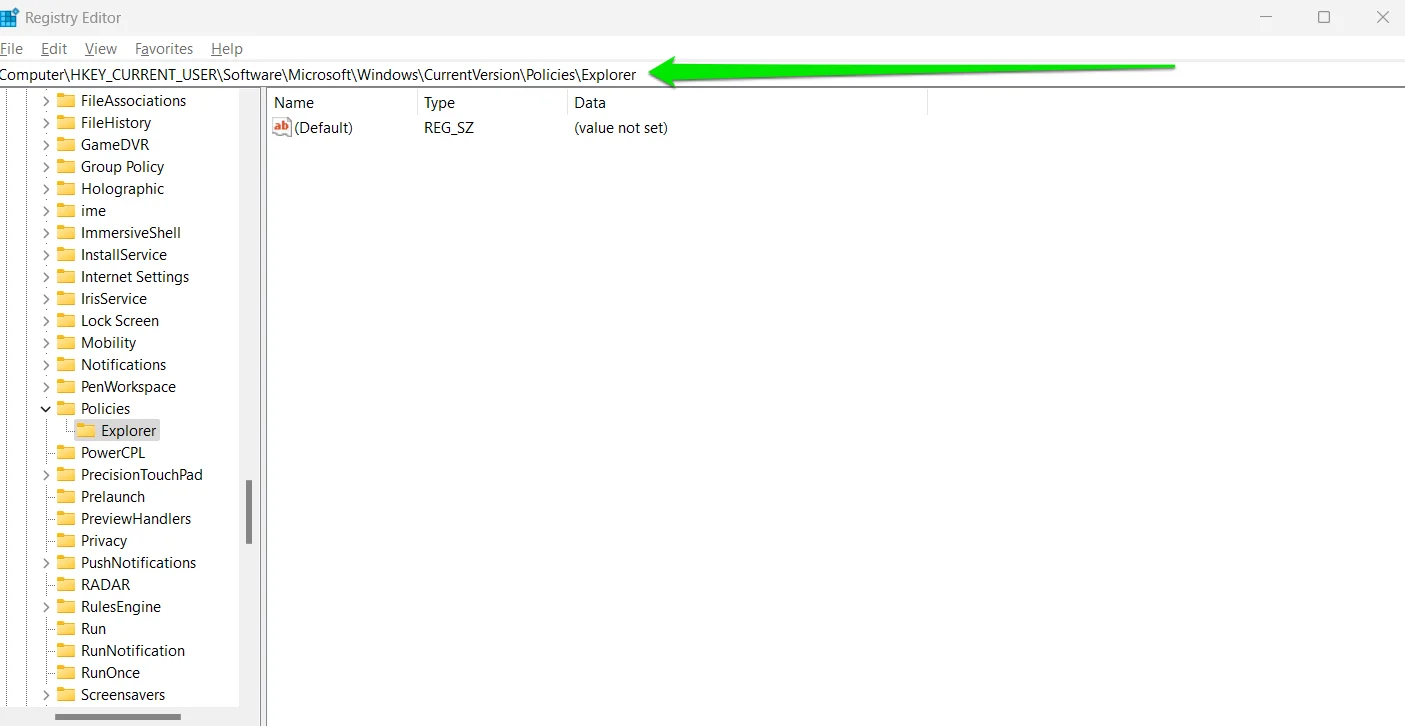
- If you don’t see the Explorer key under Policies, right-click Policies and select New > Key.
- Rename the new key to Explorer.
- Now, double-click anywhere on the right side of the screen and select New > DWORD (32-bit) Value.
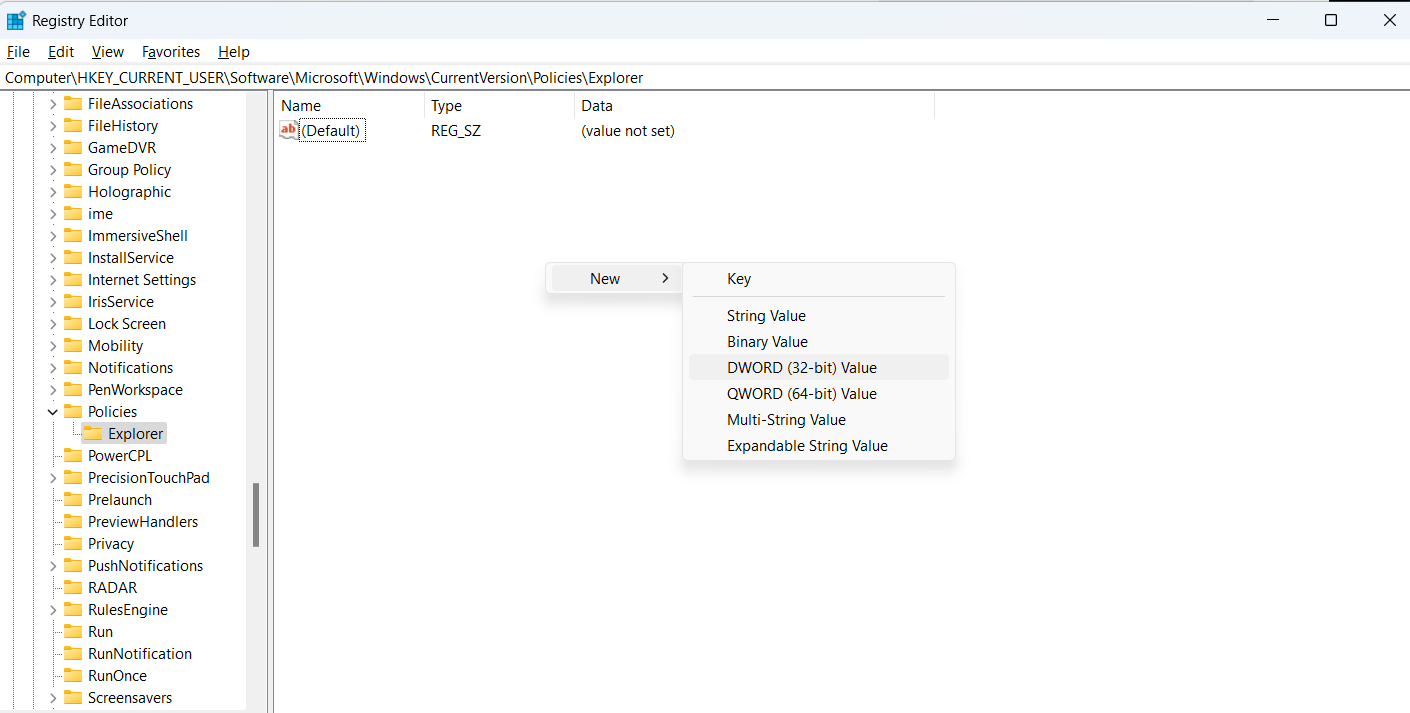
- Change the name of the new DWORD to NoWinKeys.
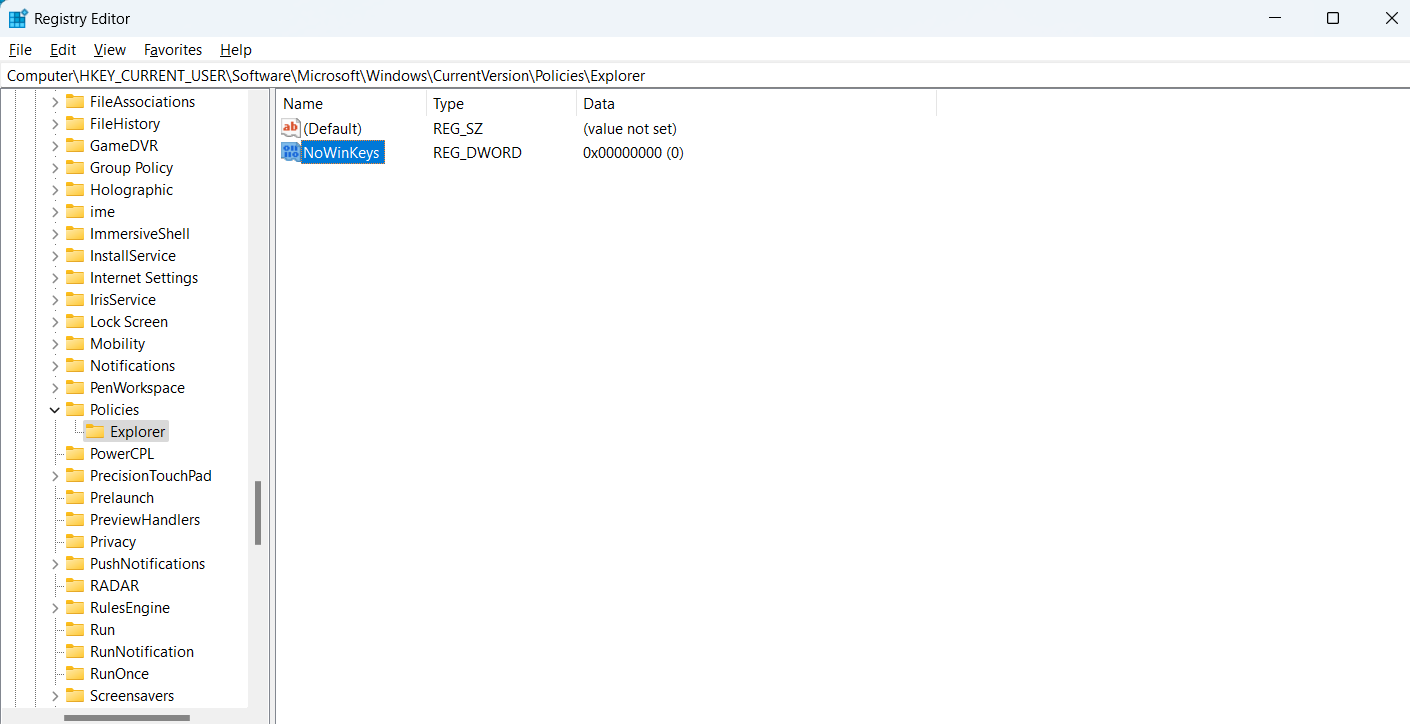
- After the Edit DWORD (32-bit) Value dialog opens, type
1in the Value Data text box and click the OK button.
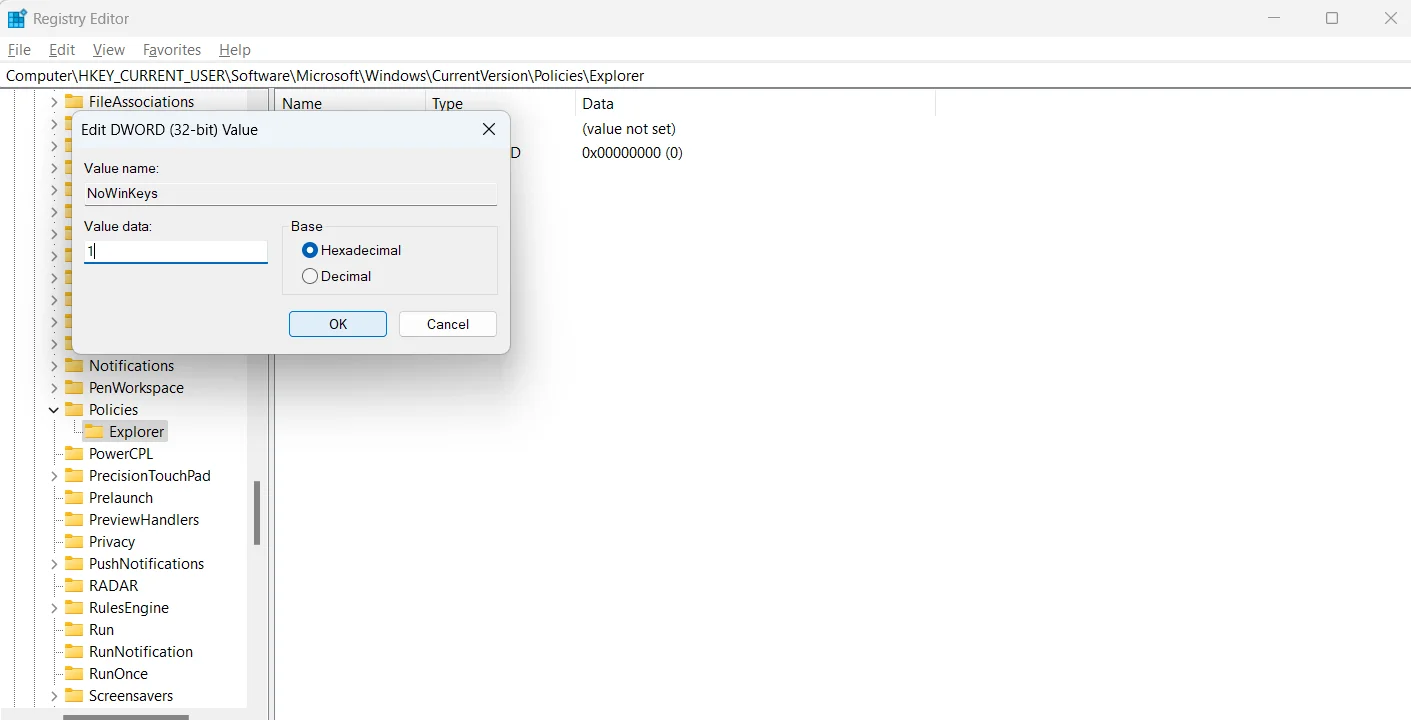
- Restart your computer.
You can undo your settings by going to the Registry Editor and changing the value of the NoWinKeys DWORD to 0.
Second method to disable Windows Key
The second method will completely disable the Windows key. Follow these steps:
- Once you open the Registry Editor, go to the left navigation pane and drill down to the following key:
Computer\HKEY_LOCAL_MACHINE\SYSTEM\CurrentControlSet\Control\Keyboard Layout
You can also copy the path and paste it into the Registry Editor’s address bar.
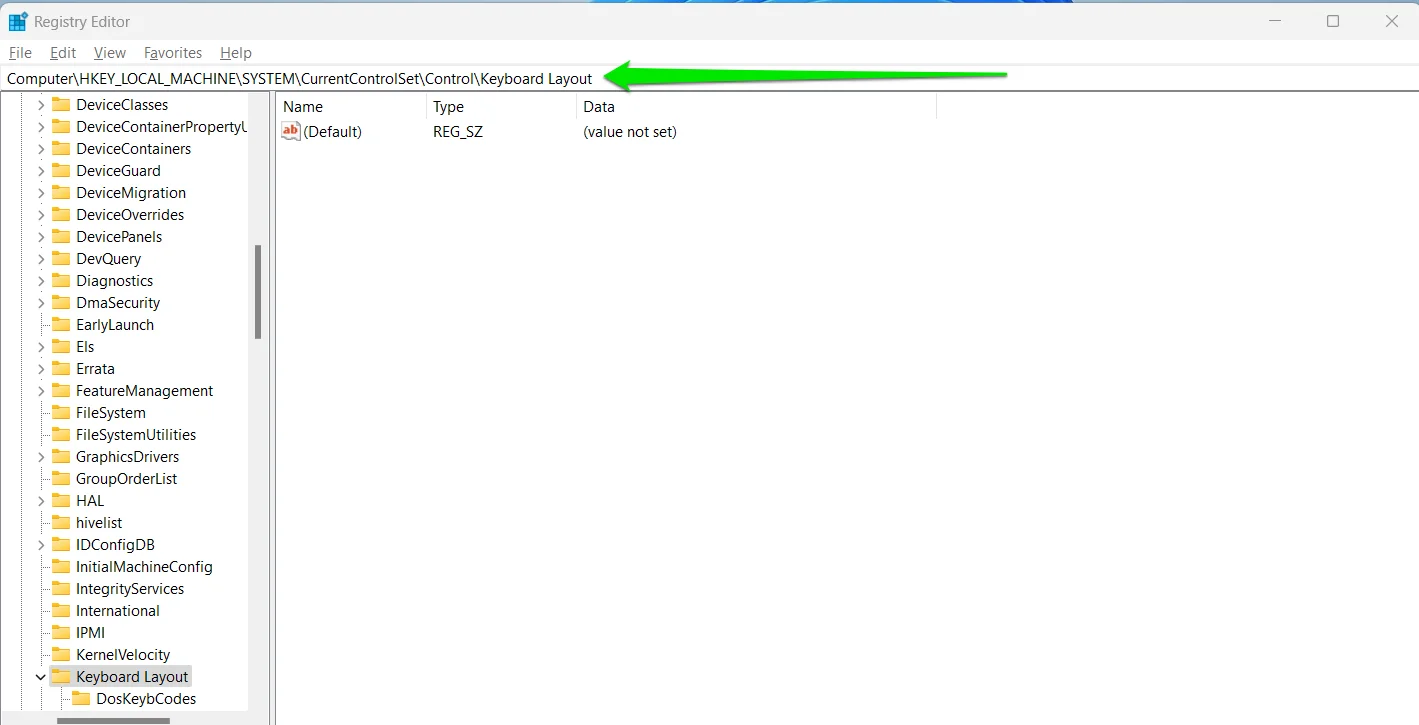
- Now, click Keyboard Layout and go to the right side of the screen. Right-click the page and select New > Binary Value.
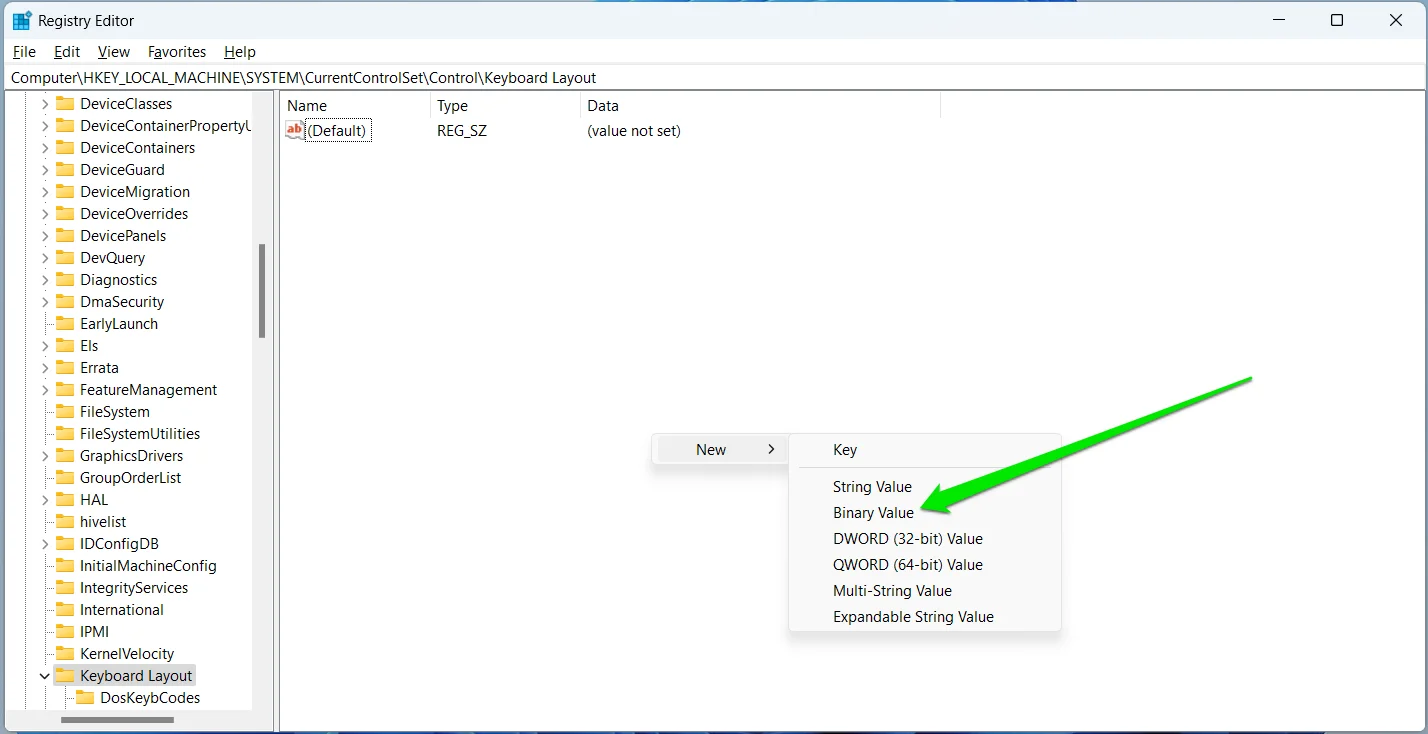
- Changed the name of the new value to Scancode Map.
- Now, double-click the Scancode Map binary value.
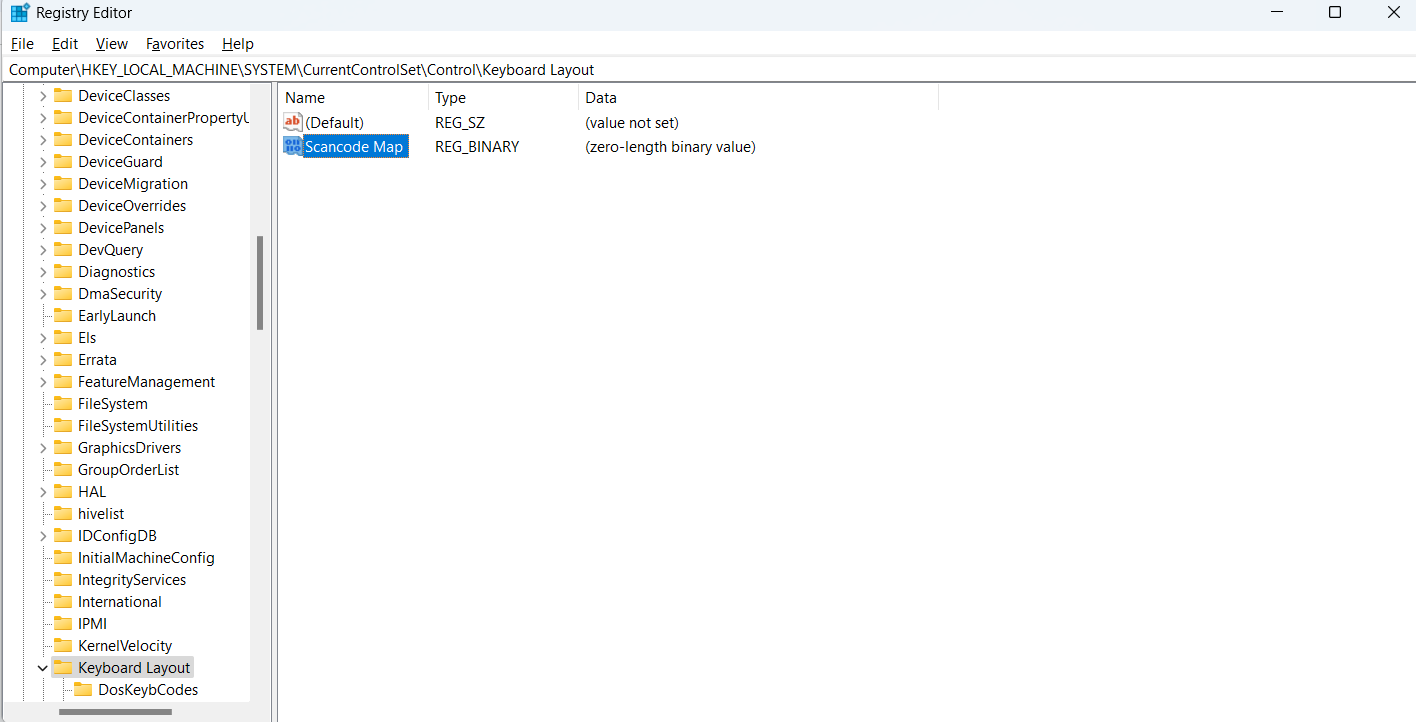
- Enter the following into the Value Data field:
00 00 00 00 00 00 00 00 03 00 00 00 00 00 5B E0 00 00 5C E0 00 00 00 00
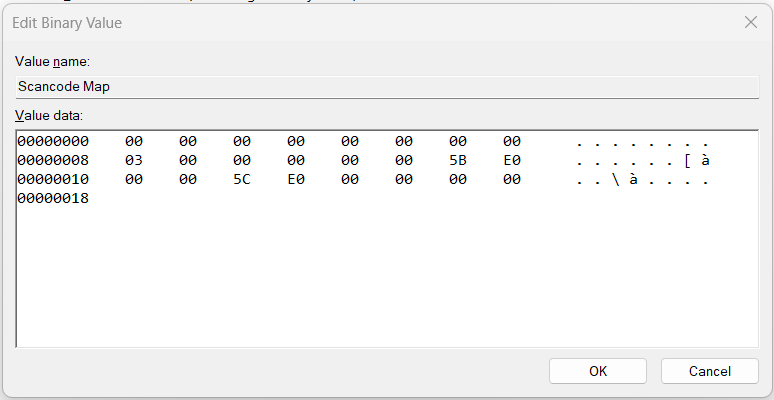
You’re only typing into the fields after the first 8 digits on the left. The computer generates those numbers based on your inputs. You don’t have to use the spacebar, as the cursor automatically shifts after you tap the digit combination.
- Click the OK button and restart your computer.
- The Windows key will no longer work.
You can always reactivate the key by going back to the Registry Editor and deleting the Scancode Map binary value.
📌 Also read: How to clean Registry in Windows 10
Method 3: Use Local Group Policy Editor to disable Windows Key
You can only use this method to turn off the Windows key if you run the Pro or Enterprise edition of Windows. There is a Group Policy that allows you to disable keyboard combinations triggered by the Windows key. These steps will show you what to do:
- Right-click the Start button and select Run in the Power User menu.
- Type
gpedit.mscinto the text box and click the OK button or press theEnterkey. - Navigate to the following policy:
User Configuration > Administrative Templates > Windows Components > File Explorer
- Go to the right side of the screen and double-click the Turn off Windows Key hotkeys setting.
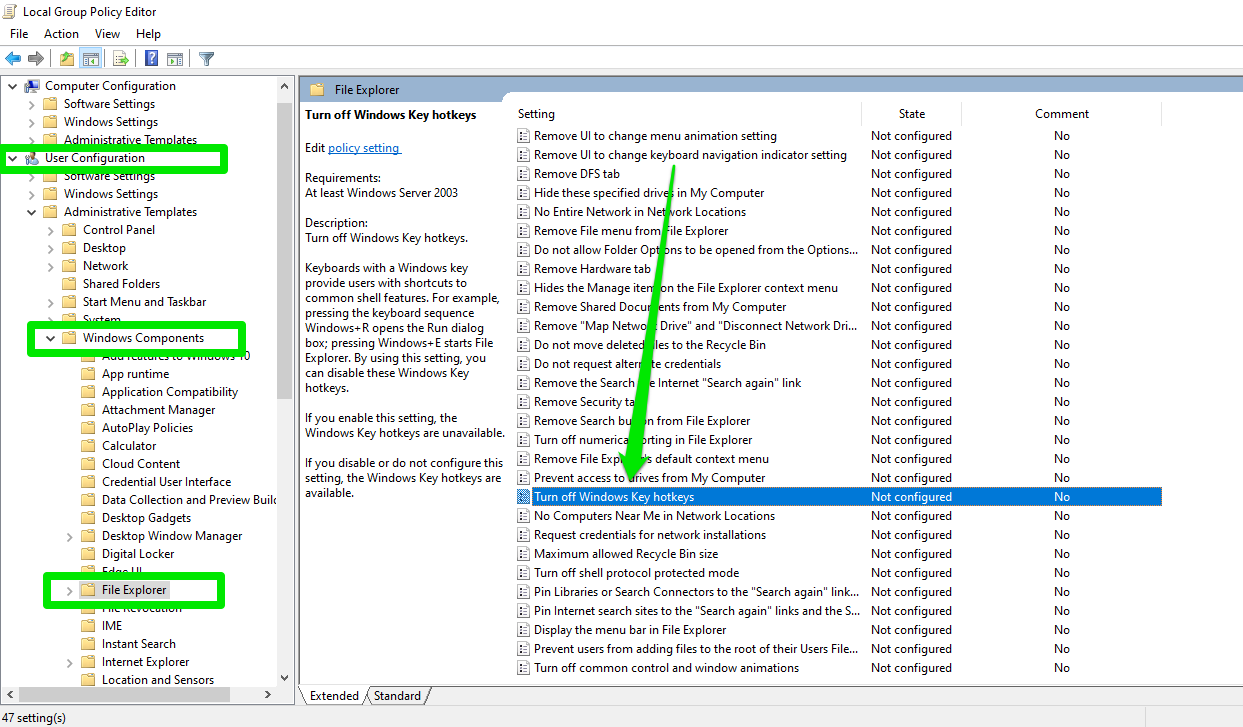
- Select Enabled and click OK.
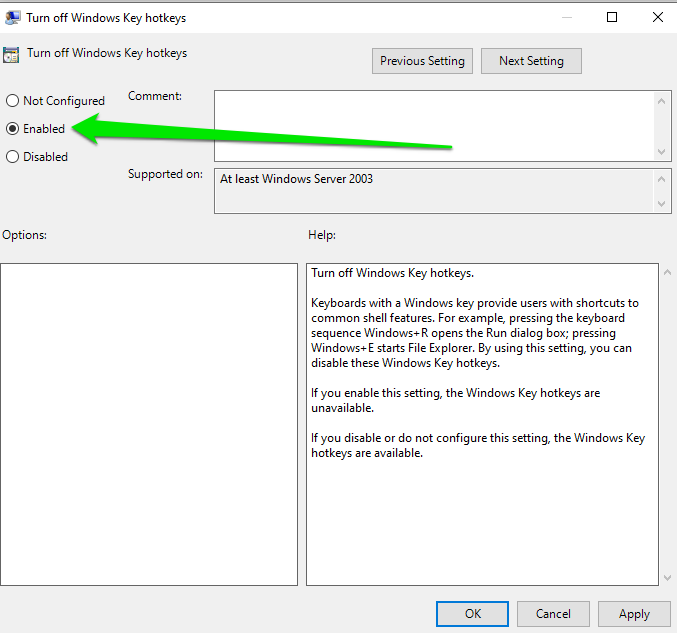
- Restart your computer.
📌 Also read: How to manage the Group Policy on Windows 10, 8 and 8.1?
Conclusion
That is how to disable the Windows key on your keyboard. But optimizing your Windows experience doesn’t end there.
Auslogics BoostSpeed can help you elevate system performance and usability even further.
The powerful software improves system responsiveness and provides a range of tools to customize how you interact with your PC.
From adjusting startup behavior to optimizing taskbar arrangements, you can transform how you use and experience your computer.
FAQ
The Windows key typically looks the same as the Microsoft Windows logo. You can see it between the Ctrl and Alt keys on the left and right sides of the spacebar on most keyboards.
You can also identify it by looking at the Start button in the taskbar, as they are identical.
You can use the Local Group Policy Editor (if you use Windows 10 Pro or Enterprise) or the Registry Editor to turn off the key before launching your game.
However, those methods typically require a restart to take effect. If you disable the Windows key using Microsoft PowerToys, launching the application will deactivate the key.
You can use Microsoft PowerToys, Registry Editor, or Local Group Policy Editor to turn off the Windows key in Windows 11.
While other third-party programs can also disable the key, these applications will do the job just fine.
